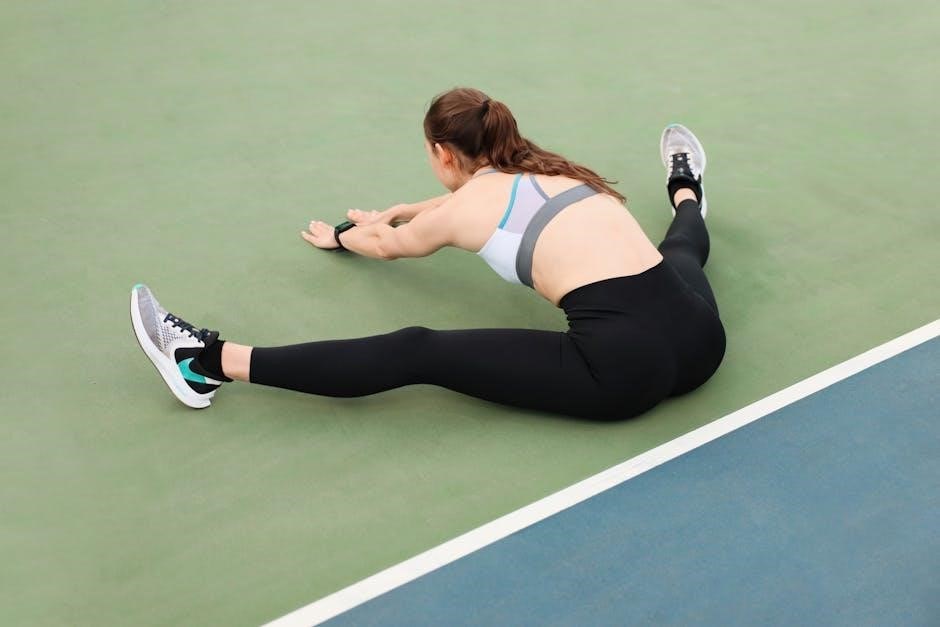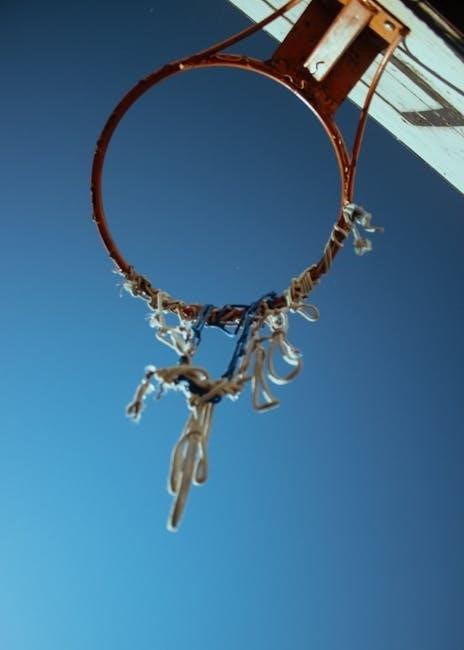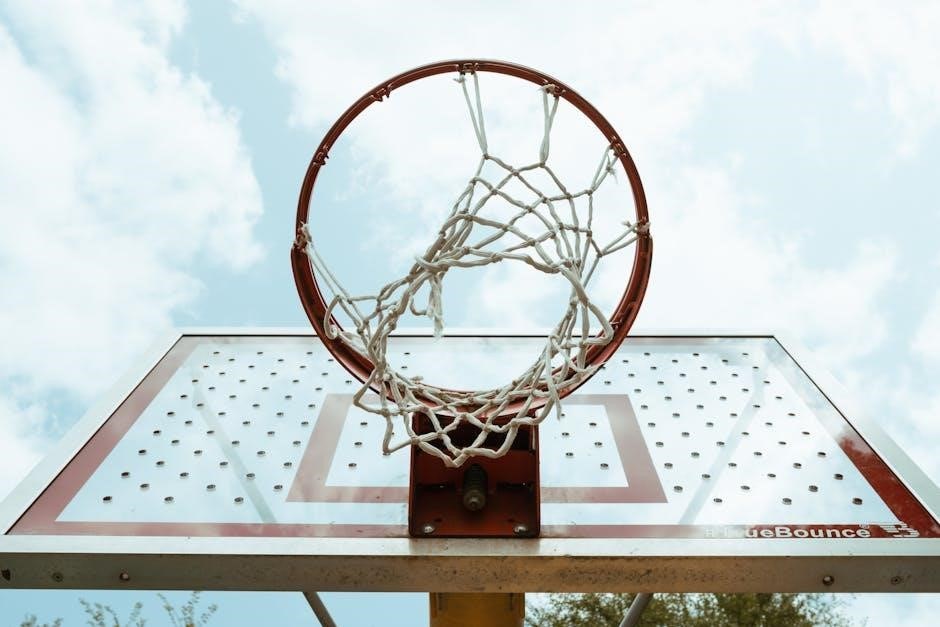
Exercises for Torn Meniscus Without Surgery
Targeted exercises like mini squats, heel raises, and bridges strengthen surrounding muscles, improving knee stability and promoting recovery without surgical intervention. Consistency and proper form are key.

Non-surgical recovery from a torn meniscus focuses on rest, physical therapy, and targeted exercises to restore knee function and reduce pain. This approach is ideal for minor to moderate tears, especially in patients who are not candidates for surgery or prefer conservative treatment. The goal is to strengthen the muscles around the knee, improve mobility, and promote healing without surgical intervention. A well-structured rehab program can help avoid complications and support the meniscus’s natural repair process. Early stages emphasize pain management and basic movements, while later phases focus on rebuilding strength and stability. Consistency and proper form are essential for success. This method is often recommended for degenerative tears or those with stable knee joints, offering a safe and effective alternative to surgery.
Key Principles of Meniscus-Friendly Exercises
Exercises for a torn meniscus should prioritize low-impact movements, avoiding activities that cause pain or stress on the knee joint. The focus is on strengthening the surrounding muscles, such as the quadriceps, hamstrings, and glutes, to provide stability and support. Gentle stretching and mobility exercises are also essential to maintain range of motion without aggravating the injury. It’s crucial to start slowly, using controlled movements, and gradually progress as strength and comfort improve. Avoiding deep squats, pivoting, or twisting motions is recommended to protect the meniscus. Using braces or supports during exercises can also help stabilize the knee. Consistency is key, as regular practice helps rebuild muscle strength and promotes healing. These exercises aim to restore knee function and reduce pain without surgical intervention.

Core Strengthening Exercises
Strengthening the core and hip muscles is vital for knee stability and reducing strain on the meniscus. Exercises like planks, bird-dog, and bridges target these areas effectively.
Bridge Exercise for Hip and Core Stability
The bridge exercise is a foundational movement that strengthens the hip muscles and core, essential for knee stability during recovery. Lie on your back with knees bent and feet flat, ensuring your pelvis is level. Engage your core, then lift your hips toward the ceiling, squeezing your glutes at the top. Extend one leg while maintaining hip height, hold for 3-5 seconds, and lower slowly. Alternate legs and perform 2-3 sets of 10-15 repetitions daily. This exercise improves pelvic alignment and reduces strain on the knee joint. Proper form is crucial to avoid exacerbating the injury. Gradually increase difficulty by adding resistance or holding the position longer as comfort allows.
Mini Squats and Heel Raises for Knee Support
Mini squats and heel raises are effective exercises for strengthening the quadriceps and calf muscles, providing essential support to the knee joint during recovery. For mini squats, stand with feet shoulder-width apart, engage your core, and lower your body slightly, keeping your back straight and knees behind your toes. Return to the starting position and repeat for 2-3 sets of 10-15 repetitions. Heel raises involve standing on the edge of a step or platform, raising your heels off the ground, and holding for 3-5 seconds before lowering. Perform 2-3 sets of 15-20 repetitions; These exercises enhance knee stability and reduce strain on the meniscus, promoting a safer recovery process without surgical intervention.

Progression and Safety
Progress gradually from low-impact to more challenging exercises, monitoring pain and swelling. Avoid twisting movements and high-impact activities to ensure safe and effective recovery.
Guidelines for Gradual Exercise Progression
Begin with gentle exercises like straight leg raises and mini squats, ensuring pain-free movement. Gradually increase intensity by adding resistance or depth. Monitor symptoms closely, adjusting exercises as needed. Progress to single-leg balances and functional movements once strength improves. Avoid sudden twists or high-impact activities. Each progression should be pain-free and controlled, focusing on maintaining proper form. Regular reassessment ensures exercises remain challenging yet safe, promoting optimal recovery without overloading the knee joint. Consistency and patience are crucial for effective, injury-free progression.

Precautions to Avoid Further Injury
Avoid deep squats, pivoting, or twisting movements that may strain the knee. Use assistive devices like crutches if needed to reduce weight-bearing stress. Ensure all exercises are performed with proper form to prevent overloading the meniscus. Avoid high-impact activities until pain-free strength and mobility are restored. Follow a structured rehabilitation program tailored to your injury severity. Pain should guide activity levels; stop if discomfort exceeds mild levels. Apply ice after exercises to manage inflammation. Gradually progress exercises to avoid sudden increases in stress. Avoid repetitive kneeling or activities that exacerbate symptoms. Prioritize low-impact movements like swimming or cycling during early recovery. Consult a healthcare professional if symptoms persist or worsen despite conservative measures.

Rehabilitation Phases
Rehabilitation progresses through structured phases, starting with acute recovery, then strengthening, and finally advanced exercises to restore function and enable a safe return to activities.

Phase 1: Acute Recovery and Pain Management
This initial phase focuses on reducing pain, inflammation, and swelling while promoting healing. Gentle exercises like straight leg raises and heel slides improve mobility without stressing the knee. Rest, ice, compression, and elevation (RICE) are crucial. Pain management may include over-the-counter medications. Avoid activities that worsen symptoms. Strengthening exercises for surrounding muscles, such as quadriceps sets, are introduced to maintain strength. Progression is based on symptom improvement and reduced inflammation. Proper posture and gait training are emphasized to avoid further strain. This phase typically lasts 1-2 weeks, depending on severity. Consult a healthcare provider to tailor exercises to individual needs and ensure a safe transition to the next phase.
Phase 2: Strengthening and Mobility
This phase focuses on enhancing muscle strength and improving joint mobility while minimizing stress on the injured meniscus. Exercises like mini squats, heel raises, and bridges are introduced to strengthen the quadriceps, hamstrings, and glutes. Resistance bands or light weights can be added to increase intensity. Passive knee extensions and gentle stretching are used to restore full range of motion. Balance exercises, such as single-leg stands, improve proprioception and stability. Activities are progressed gradually to avoid overloading the knee. The goal is to achieve sufficient strength and mobility to support daily activities without pain. This phase typically lasts 2-4 weeks, with progression based on improved strength and reduced symptoms. Continued adherence to a structured exercise plan is essential for optimal recovery.
Phase 3: Advanced Strengthening and Return to Activity
This phase focuses on advancing strength, agility, and functional movements to prepare for a return to normal activities or sports. Exercises like single-leg squats, balance drills, and lateral step-ups are introduced to enhance stability and dynamic control. Resistance bands or light weights can be incorporated to increase intensity. Functional movements, such as step-ups and agility drills, mimic real-life activities to improve practical mobility. Patients are encouraged to gradually resume low-impact activities, such as swimming or cycling, while avoiding high-impact movements that could strain the knee. Progression is based on symptom-free performance and improved strength. This phase typically lasts 4-6 weeks, with the goal of achieving full strength, mobility, and confidence for a safe return to activity. Proper form and gradual progression are emphasized to prevent setbacks.
Exercises play a crucial role in the non-surgical recovery of a torn meniscus, offering a safe and effective way to restore knee function and strength. By following a structured program that progresses from basic to advanced movements, individuals can avoid surgery and achieve long-term relief. Consistency and patience are key, as recovery requires time and dedication. The exercises outlined in this guide, such as mini squats, heel raises, and bridges, are designed to strengthen the surrounding muscles, improve mobility, and reduce pain. With proper adherence and gradual progression, many people can successfully recover and return to their normal activities without the need for surgical intervention. Always consult a healthcare professional to tailor the program to individual needs and ensure a safe, effective recovery journey.